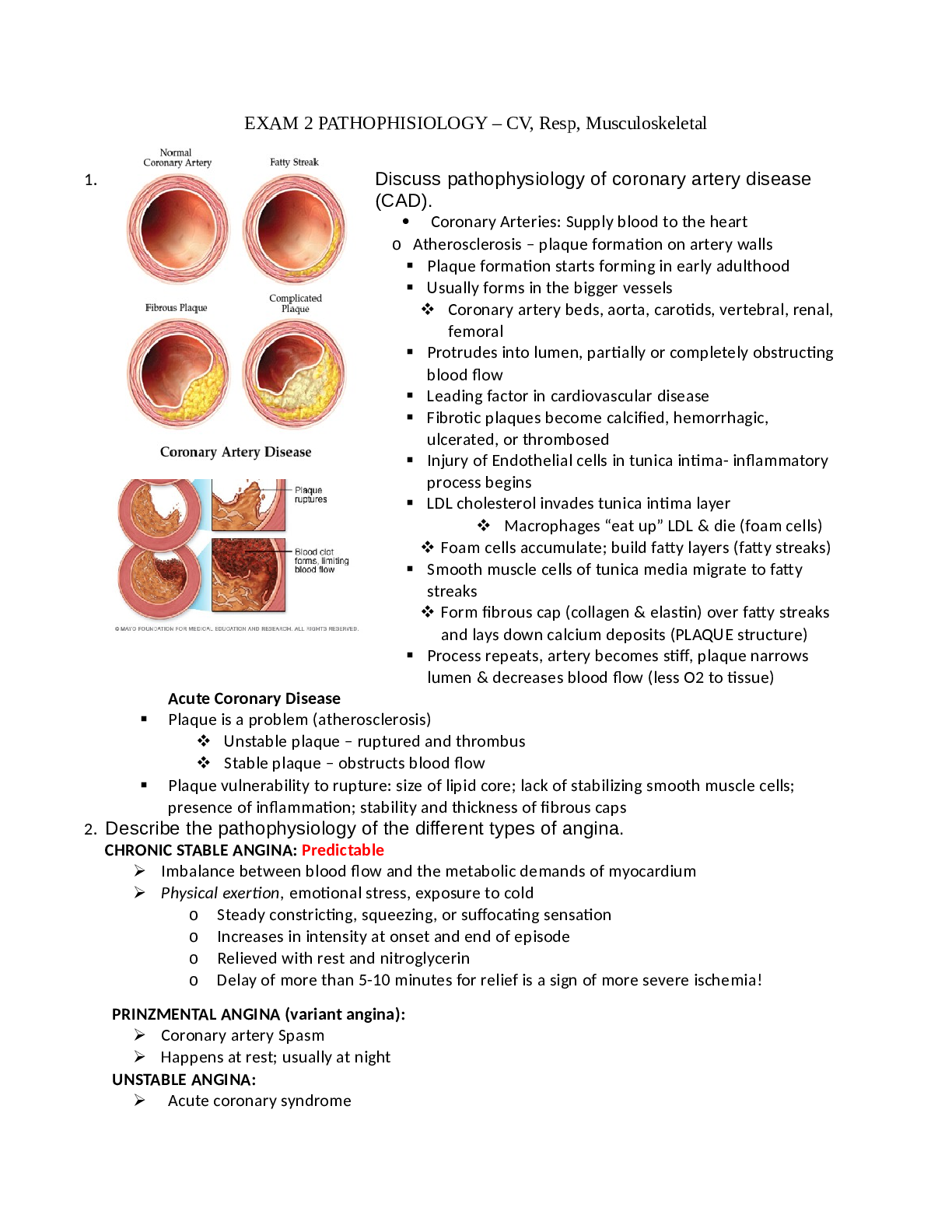Computer Science > STUDY GUIDE > Chaparral High School, Scottsdale - SCIENCE 240Earth Nullschool Computer Activity (All)
Chaparral High School, Scottsdale - SCIENCE 240Earth Nullschool Computer Activity
Document Content and Description Below
Computer Activity: Using A Real-Time Global Map of Wind, Currents and Particulate Patterns https://earth.nullschool.net/ Click on the lower left word earth and then about. 1. How often is each of ... the following updated? ● Weather: [ every 3 hrs ] ● Surface current estimates: [ every 5 days] ● Surface temperatures: [ daily ] ● Ocean waves: [ every 3 hours ] Scroll down to see where the data comes from. 2. Click on the underlined hyperlinks to find what the acronyms stand for. ● ESR: [ Earth and Space Resource ] ● NCEP: [ National Centers for Environmental Prediction ] ● NWS: [National Weather Service ] ● NOAA: [ National Oceanic and Atmospheric Administration ] ● GEOS-5: [ Goddard Earth Observing System Model-5 ] Continue scrolling down and read the information. 3. What interesting feature of the atmosphere is found at 250 mb? [ jet stream ] 4. a. What does SSTA stand for? [ Sea Surface Temperature Anomaly ] b. Define anomaly: [ Something that deviates from the norm ] c. What useful information do you think you could gain from examining SSTAs that you couldn’t gain from SSTs? [ Fromm SSTA you can learn when things are different from the average, and from that you can make predictions and statisques ] 5. Scroll to about aerosols and extinction ● Define Aerosol: [ air containing particles ] ● List common particles: [ dust, smoke, soot, and water droplets (clouds) ] ● What do particles have to do with extinction? (Not biological extinction!) [ These particles affect sunlight primarily through absorption and scattering, which combine to reduce the amount of light reaching the ground. This loss of light as it passes through the atmosphere is called extinction. ] ● Go back to the main page. Notice how you can click and drag to spin the earth. Click on earth again. You can minimize the menu and bring it back up by clicking earth whenever you need to. Practice this. You can also zoom in and out on your map. ● Notice that if you don’t know what a parameter stands for (TPW?) you can hold your mouse over it without clicking to see. (Total Precipitable Water!) ● Notice the default parameters are in yellow. So, the default you are looking at is the Air, Sfc (surface), Wind. You are viewing the direction and strength of the earth’s winds. ● Look at Projection. Click on the different map options and choose your favorite. I prefer W3 (Winkel Triple). ● Look at the colored scale. You can see that in this set of data, yellow/orange/red indicates [Show More]
Last updated: 2 years ago
Preview 1 out of 4 pages

Buy this document to get the full access instantly
Instant Download Access after purchase
Buy NowInstant download
We Accept:

Reviews( 0 )
$4.00
Can't find what you want? Try our AI powered Search
Document information
Connected school, study & course
About the document
Uploaded On
Apr 06, 2021
Number of pages
4
Written in
Additional information
This document has been written for:
Uploaded
Apr 06, 2021
Downloads
0
Views
51













